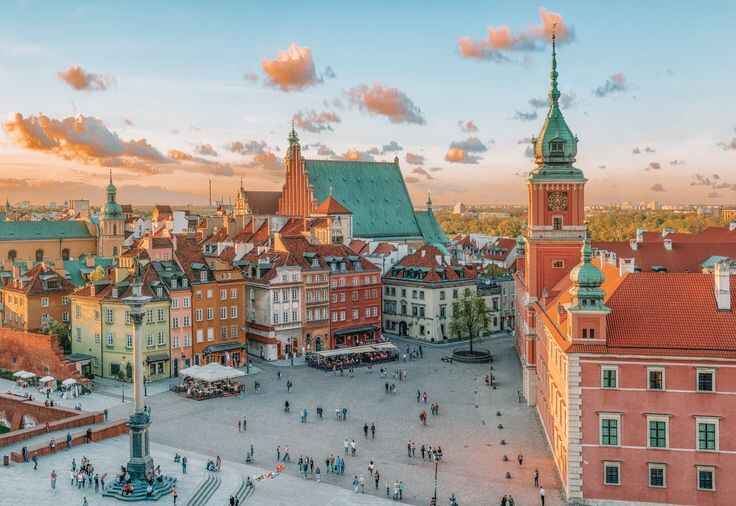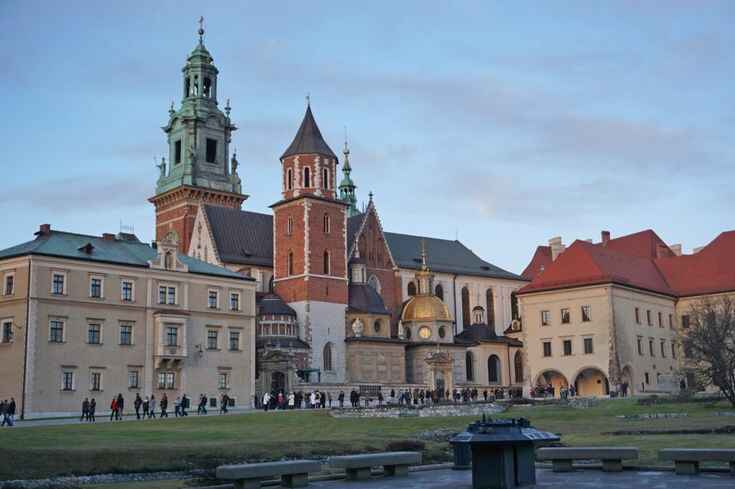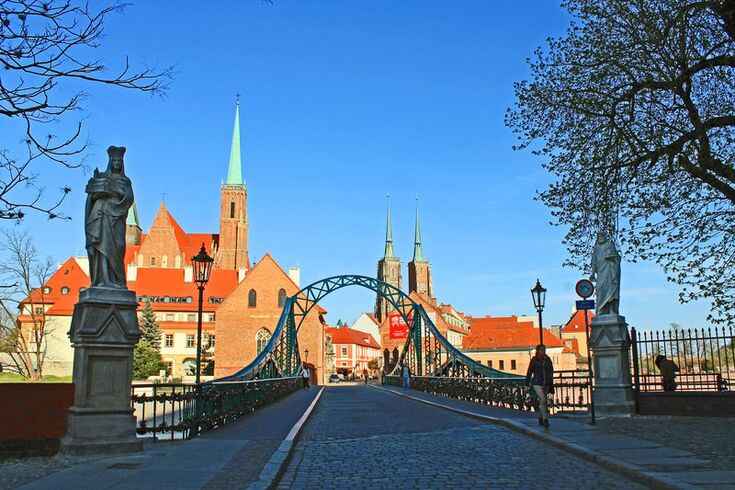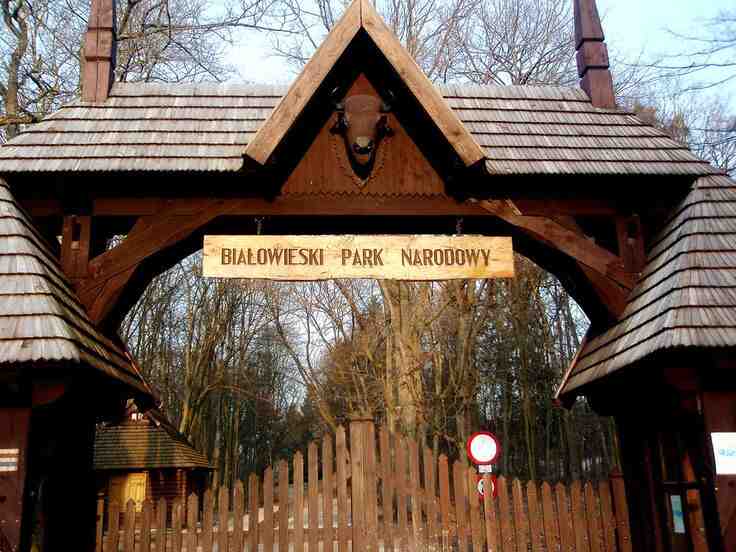Best Places To Travel In Poland
1.Warsaw, the capital of Poland
Warsaw

Warsaw, the capital of Poland, is a dynamic city known for its rich history and modern vibrancy. Rebuilt after World War II, it showcases a mix of architectural styles, from medieval structures in the Old Town to contemporary buildings.
Poland itself is located in Central Europe and is known for its diverse landscapes, ranging from mountains in the south to the Baltic Sea in the north. The country has a rich cultural heritage, with historic cities, picturesque countryside, and a strong tradition of art, music, and cuisine. Poland’s resilient history, marked by periods of independence and occupation, has shaped its national identity and contemporary society.
Best Months to Visit
The best months to visit Warsaw are typically late spring (May to June) and early autumn (September to October). During these times, the weather is usually mild and pleasant, making it ideal for exploring the city’s attractions and parks.
In May, you can enjoy blooming flowers and vibrant greenery, while September offers a beautiful display of autumn colors. Additionally, both months tend to have fewer tourists compared to the peak summer season. If you prefer warmer weather, July and August are also good, but they can be more crowded.
Open Days And Timing
Opening days and hours for attractions in Warsaw can vary widely, but here’s a general overview for popular places:
Royal Castle:
- Open: Tuesday to Sunday
- Hours: 10 AM – 6 PM (extended hours in summer)
Lazienki Park:
- Open year-round
- Hours: 6 AM – dusk
Warsaw Uprising Museum:
- Open: Tuesday to Sunday
- Hours: 10 AM – 6 PM (closed Mondays)
POLIN Museum of the History of Polish Jews:
- Open: Monday to Friday
- Hours: 10 AM – 6 PM (weekends may have different hours)
Wilanów Palace:
- Open: Tuesday to Sunday
- Hours: 10 AM – 6 PM (varies by season)
Palace of Culture and Science:
- Open: Daily
- Hours: 9 AM – 8 PM (check for specific observatory hours)
Ticket
In Warsaw, ticket prices for attractions can vary. Here’s a general idea:
Royal Castle:
- Adults: around 30 PLN
- Reduced: around 20 PLN
Warsaw Uprising Museum:
- Free entry on Sundays; otherwise, around 28 PLN for adults.
POLIN Museum of the History of Polish Jews:
- Adults: around 25 PLN
- Reduced: around 15 PLN
Wilanów Palace:
- Adults: around 30 PLN
- Reduced: around 20 PLN
Palace of Culture and Science:
- Observation deck: around 20 PLN
Lazienki Park:
- Free entry; some attractions (like the Palace on the Isle) may have a fee.
Near By Location
Zalew Zegrzyński: A large reservoir about 30 km north of Warsaw, ideal for water sports, picnics, and cycling.
Kampinos National Park: Located just west of Warsaw, this park offers beautiful hiking trails, diverse wildlife, and serene natural landscapes.
Żyrardów: A charming town about 50 km west of Warsaw, known for its historical textile industry and picturesque architecture.
Nieborów and Arkadia: A lovely area featuring a historic palace and gardens, located around 80 km from Warsaw.
Czersk: A small village with a well-preserved medieval castle, about 40 km south of Warsaw.
The Palace in Wilanów: While technically in Warsaw, it’s a bit further out and features beautiful gardens and stunning architecture.
Modlin Fortress: Located about 35 km north of Warsaw, this historic fortress offers guided tours and scenic views of the Vistula River.
2.Kraków
Wawel Castle

Wawel Castle is a stunning historical site in Kraków, Poland, perched on Wawel Hill overlooking the Vistula River. It served as the royal residence for Polish kings and is a symbol of national identity. The castle complex features a mix of architectural styles, including Gothic, Renaissance, and Baroque, with highlights such as the impressive Royal Cathedral, which houses the tombs of many Polish monarchs.
Kraków itself is one of Poland’s oldest and most beautiful cities, known for its well-preserved medieval core. The Main Market Square is one of Europe’s largest town squares, bustling with activity, cafes, and street performers. The city is rich in culture and history, with attractions like the historic Jewish quarter of Kazimierz, the haunting Auschwitz-Birkenau Memorial nearby, and vibrant nightlife. Together, Wawel Castle and Kraków offer a captivating glimpse into Poland’s royal past and vibrant present.
Best Months to Visit
The best months to visit Wawel Castle in Kraków are May to September. Here’s a breakdown of what to expect during these months:
1. May to June
- Why visit: The weather is generally mild and pleasant, with blooming flowers and longer daylight hours, perfect for exploring the castle grounds and nearby attractions.
- Events: Various cultural events and festivals often take place during this time.
2. July to August
- Why visit: This is the peak tourist season, so the castle will be bustling with visitors. However, the weather is warmest, with temperatures typically ranging from 20°C to 25°C (68°F to 77°F).
- Activities: Ideal for enjoying the outdoor spaces and nearby gardens, as well as guided tours of the castle.
3. September
- Why visit: Early fall offers beautiful autumn colors, fewer crowds, and mild weather. It’s a great time for a more relaxed visit.
- Highlights: The surrounding parks and gardens are particularly lovely during this time.
Winter (October to April)
- While winter can be magical, with fewer tourists and a quieter atmosphere, it can also be quite cold, and some outdoor areas may be less accessible. However, visiting during the holiday season can provide a festive charm.
Open Days And Timing
Wawel Castle in Kraków typically has the following opening days and times:
General Opening Hours:
April to October:
- Daily: 9 AM to 6 PM
November to March:
- Daily: 9 AM to 4 PM
Exhibition Hours:
- Some specific exhibitions within the castle may have different hours or may be closed on certain days, so it’s a good idea to check in advance.
Closed Days:
- The castle is usually closed on certain public holidays, so be sure to check the schedule if your visit coincides with those dates.
Ticket
General Admission:
- Adults: Approximately 30-40 PLN (about $7-10 USD), depending on the exhibition.
- Students/Seniors: Usually around 20-30 PLN (about $5-7 USD) with valid ID.
Specific Exhibitions:
- Some areas, like the State Rooms, Royal Private Apartments, and Wawel Cathedral, may have separate ticket prices, typically ranging from 15 to 30 PLN.
Audio Guides:
- Available for an additional fee, usually around 10-20 PLN.
Discounts:
- Family tickets, group discounts, and free entry on specific days or for certain groups (like children under 7) may be available.
Combo Tickets:
- Consider combo tickets for access to multiple exhibitions, which can be more economical.
Purchasing Tickets:
- It’s advisable to buy tickets online in advance, especially during peak seasons, to avoid long queues.
Near By Location
1. Wawel Cathedral
- Distance: Adjacent to the castle.
- Highlights: A stunning Gothic cathedral that houses the tombs of Polish kings and beautiful chapels. Climb the tower for panoramic views.
2. Vistula Boulevards
- Distance: Just a short walk away.
- Highlights: Scenic walking paths along the Vistula River, perfect for a leisurely stroll or picnic with views of the castle.
3. Kazimierz (Jewish Quarter)
- Distance: About 1 km (15 minutes on foot).
- Highlights: A historic district filled with synagogues, Jewish heritage sites, art galleries, and vibrant cafes.
4. Planty Park
- Distance: Surrounds the Old Town, starting near Wawel Castle.
- Highlights: A beautiful park that offers a pleasant walk around the city’s historic core, with lovely greenery and monuments.
5. Main Market Square (Rynek Główny)
- Distance: About 1.5 km (20 minutes on foot).
- Highlights: One of the largest medieval squares in Europe, featuring the Cloth Hall, St. Mary’s Basilica, and bustling cafes.
6. Collegium Maius
- Distance: About 1 km (15 minutes on foot).
- Highlights: The oldest building of Jagiellonian University, with a charming courtyard and a fascinating museum.
7. Schindler’s Factory
- Distance: About 2.5 km (30 minutes on foot or a short tram ride).
- Highlights: A museum dedicated to the history of Kraków during WWII, located in the former factory of Oskar Schindler.
8. The Barbican
- Distance: About 1.5 km (20 minutes on foot).
- Highlights: A historic fortress and part of the city’s medieval defenses, offering insights into Kraków’s history.
9. St. Florian’s Gate
- Distance: About 1.5 km (20 minutes on foot).
- Highlights: A historic city gate that marks the beginning of the Royal Route and features a striking tower.
10. Botanic Garden of the Jagiellonian University
- Distance: About 1.5 km (20 minutes on foot).
- Highlights: A serene spot with diverse plant species, perfect for a peaceful stroll.
3.Wrocław
Ostrów Tumski

Ostrów Tumski is the oldest part of Wrocław, Poland, and is often referred to as the city’s historical heart. This picturesque island on the Odra River is home to stunning Gothic and Romanesque architecture, including the beautiful Cathedral of St. John the Baptist, which boasts impressive stained glass and panoramic views from its tower. The area is also known for its charming cobblestone streets, historic buildings, and serene atmosphere, making it perfect for leisurely strolls.
Wrocław itself is a vibrant city filled with rich history, culture, and a lively arts scene. It features a mix of architectural styles, from medieval to modern, and is famous for its Market Square, one of the largest in Europe, adorned with colorful townhouses and the Gothic-style Town Hall. The city is also renowned for its numerous bridges and islands, earning it the nickname “Venice of Poland.” With a lively nightlife, diverse culinary scene, and various cultural events throughout the year, Wrocław offers a captivating experience for visitors!
Best Months to Visit
The best months to visit Ostrów Tumski in Wrocław are May to September. Here’s a brief overview of what to expect during these months:
1. May to June
- Why visit: The weather is usually mild and pleasant, with blooming flowers and lush greenery. This is an ideal time for walking and exploring the area.
- Events: Various cultural events and festivals often take place, adding to the vibrant atmosphere.
2. July to August
- Why visit: These are the warmest months, with temperatures typically ranging from 20°C to 30°C (68°F to 86°F). It’s a great time for outdoor activities and enjoying the scenery.
- Tourism: Expect more tourists, but the lively ambiance makes for a great experience.
3. September
- Why visit: Early fall offers beautiful autumn colors and a quieter atmosphere as the summer crowds begin to dwindle. The weather remains pleasant for exploration.
Winter (October to April)
- While winter can be magical, with holiday lights and fewer crowds, temperatures can be quite cold. If you enjoy winter charm, visiting around Christmas can be delightful, but be prepared for chilly weather.
Open Days And Timing
Ostrów Tumski in Wrocław is an open area, so you can visit it year-round at any time of day. However, specific attractions within the area, like churches and museums, have set hours:
General Access:
- Open Days: Daily, year-round.
- Timing: Accessible 24 hours, but best visited during daylight for safety and to enjoy the scenery.
Key Attractions:
Cathedral of St. John the Baptist:
- Opening Hours:
- Monday to Saturday: 9 AM to 5 PM
- Sunday: 12 PM to 5 PM
- Opening Hours:
Other Churches:
- Various other churches on the island may have similar hours, typically open during the day but closed for services at specific times.
Tips:
- Events: Check for any special events or services, especially on weekends and holidays, as they might affect access.
- Guided Tours: If you’re interested in guided tours, timings may vary, so it’s good to book in advance.
Ticket
Visiting Ostrów Tumski itself is free, as it is an open area. However, there may be ticket fees for specific attractions or activities within the area, such as:
1. Cathedral of St. John the Baptist:
- Admission: Usually free, but donations are appreciated. Special guided tours might have a fee.
2. Other Churches:
- Some churches may have small entrance fees, typically around 5-10 PLN (about $1-2 USD).
3. Guided Tours:
- If you choose to take a guided tour of Ostrów Tumski or nearby attractions, prices can vary, generally ranging from 40 to 100 PLN (approximately $10-25 USD) per person.
4. Events:
- Check for any special events or exhibitions that may have admission fees.
Near By Location
1. Cathedral Island (Ostrów Tumski)
- Highlights: The beautiful Cathedral of St. John the Baptist and other historic churches, perfect for a leisurely exploration.
2. Wrocław University
- Distance: About 1 km (15 minutes on foot).
- Highlights: Home to the stunning Aula Leopoldina and a beautiful botanical garden.
3. Market Square (Rynek Główny)
- Distance: About 1.5 km (20 minutes on foot).
- Highlights: One of Europe’s largest medieval squares, bustling with shops, cafes, and the impressive Gothic Town Hall.
4. Ostrów Tumski Bridge (Most Tumski)
- Distance: Adjacent to Ostrów Tumski.
- Highlights: A picturesque pedestrian bridge known for its love locks and stunning views of the river and cathedral.
5. Wrocław Fountain
- Distance: About 2 km (25 minutes on foot).
- Highlights: A spectacular multimedia fountain located in Słowacki Park, often featuring light and music shows.
6. Hydropolis
- Distance: About 1.5 km (20 minutes on foot).
- Highlights: An interactive museum dedicated to water, offering fascinating exhibits and experiences.
7. Książnica Przeszłości (Library of the Future)
- Distance: About 1 km (15 minutes on foot).
- Highlights: A modern library with interesting architectural features and reading spaces.
8. Centennial Hall (Hala Stulecia)
- Distance: About 3 km (30 minutes on foot or a short tram ride).
- Highlights: A UNESCO World Heritage site known for its impressive architecture and hosting various cultural events.
9. Japanese Garden
- Distance: Near Centennial Hall.
- Highlights: A serene garden featuring traditional Japanese landscaping and a tranquil atmosphere.
10. National Museum
- Distance: About 1.5 km (20 minutes on foot).
- Highlights: Offers a rich collection of Polish art and historical exhibits.
4.Białowieża National Park
Białowieża National Park

Białowieża National Park is one of Europe’s last remaining primeval forests, straddling the border between Poland and Belarus. Designated a UNESCO World Heritage site, it is renowned for its rich biodiversity and ancient trees, some of which are over 500 years old. The park is home to the European bison, the continent’s heaviest land animal, which was once on the brink of extinction.
Visitors can explore well-marked trails that wind through lush forest, offering opportunities for wildlife spotting, including deer, wolves, and numerous bird species. The park also features a visitor center and educational exhibits about its unique ecosystem and conservation efforts. With its tranquil beauty and ecological significance, Białowieża National Park is a must-visit destination for nature lovers and outdoor enthusiasts.
Best Months to Visit
The best months to visit Białowieża National Park are May to September. Here’s a breakdown:
1. May to June
- Why visit: Mild temperatures and lush greenery make it perfect for hiking and exploring. Wildflowers are in bloom, adding to the beauty of the forest.
- Wildlife: Great time for birdwatching and spotting animals as they are active during spring.
2. July to August
- Why visit: Warm weather with longer days allows for extended exploration. This is peak season, so the park may be busier, but it offers vibrant summer landscapes.
- Activities: Ideal for hiking, biking, and guided tours.
3. September
- Why visit: Early fall brings beautiful autumn colors and fewer crowds. The weather is still pleasant, making it a great time for outdoor activities.
- Wildlife: Animals start to prepare for winter, providing unique wildlife viewing opportunities.
Winter (October to April)
- While winter offers a magical atmosphere with snow-covered trees, conditions can be cold and trails may be less accessible. If you enjoy winter scenery and solitude, it can still be a lovely time to visit, especially for those interested in winter sports or wildlife tracking.
Open Days And Timing
Białowieża National Park has specific visiting hours, and they can vary by season. Here’s a general overview:
Park Access:
- Open Year-Round: The park is accessible throughout the year.
Visitor Center:
- Hours: Typically open daily, but hours can vary seasonally.
- Summer (June to August): 9 AM – 6 PM
- Spring and Autumn: 9 AM – 5 PM
- Winter: 9 AM – 4 PM
Forest Trails:
- Open Year-Round: Most trails are accessible throughout the year, though some may be affected by weather conditions in winter.
Tours:
- Guided tours of the primeval forest usually require advance booking and are available at set times.
Ticket
Ticket prices for Białowieża National Park vary based on the type of access you need. Here’s a general overview:
Entrance Fee:
- Adults: around 8 PLN
- Reduced: around 4 PLN (students, seniors)
Guided Tours:
- Prices vary depending on the type and length of the tour, typically ranging from 40 PLN to 120 PLN per person.
Additional Fees:
- There might be extra fees for specific attractions, like the Nature and Forest Museum.
Near By Location
Białowieża Village: The closest village, offering local accommodations, restaurants, and cultural experiences. Don’t miss the wooden architecture and traditional crafts.
Białowieża Palace: A historic residence of the Polish kings, now a hotel and conference center. The surrounding grounds are also beautiful for a stroll.
Puszcza Białowieska: The broader Białowieża Forest area extends beyond the national park, offering additional trails and natural beauty.
Krynki: A charming town about 30 km away, known for its unique wooden churches and local history.
Narew National Park: About 50 km north, this park features marshes and diverse wildlife, ideal for birdwatching and hiking.
Suwalki Landscape Park: Roughly 90 km away, it offers stunning landscapes, glacial lakes, and a variety of outdoor activities.
Tykocin: A picturesque town about 60 km away, famous for its historic synagogue and beautiful riverside views.
